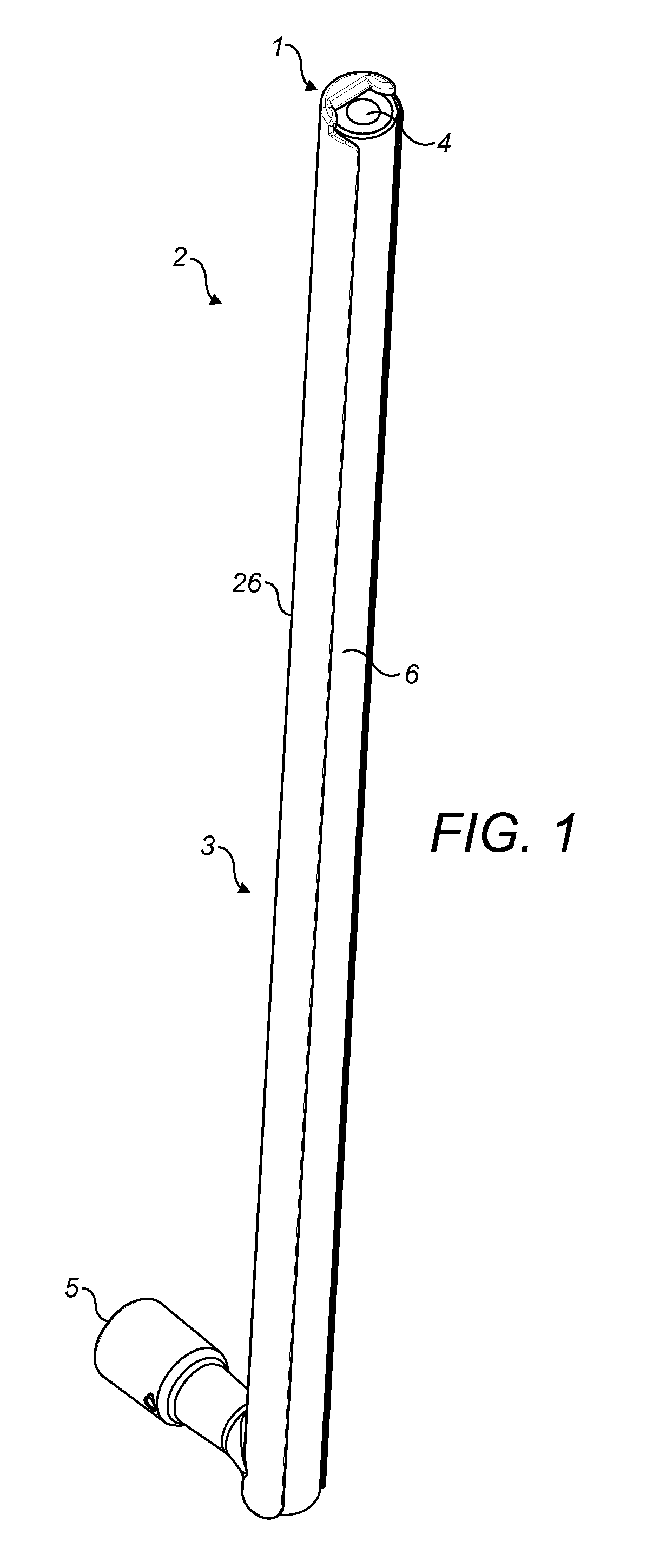Flow guide
a flow guide and flow technology, applied in the field of flow guides, can solve the problems of increasing surgical theatre time and patient being under general anesthesia, affecting the visualisation of laparoscopic images, and affecting the patient's general anesthesia, so as to facilitate flow divergence, facilitate flow separation, and facilitate the effect of flow divergen
- Summary
- Abstract
- Description
- Claims
- Application Information
AI Technical Summary
Benefits of technology
Problems solved by technology
Method used
Image
Examples
Embodiment Construction
With reference to FIG. 1, a flow guide 2 is attached to a laparoscope 6, which is generally cylindrical or rod-shaped. The flow guide 2 is for guiding a fluid flow longitudinally along the laparoscope 6 and directing the fluid flow across a substantially flat distal end surface 4 of the laparoscope 6. The flow guide 2 is arranged to promote laminar flow of the fluid across the end surface 4 of the laparoscope 6. The flow guide 2 comprises a longitudinal portion 3 for guiding the fluid flow in a longitudinal direction along the shaft of the laparoscope 6, a distal end portion 1 for directing the fluid flow across the end surface 4 to clean the end surface 4 and an inlet 5 at an opposite end. The end surface 4 (shown in more detail in FIG. 2) is disposed generally in a transverse plane. (i.e. a plane, perpendicular to the longitudinal direction, that is fixed relative to the flow guide 2) and comprises a lens 4a, optical window, or other surface of the laparoscope 6, surrounded by a f...
PUM
 Login to View More
Login to View More Abstract
Description
Claims
Application Information
 Login to View More
Login to View More - R&D
- Intellectual Property
- Life Sciences
- Materials
- Tech Scout
- Unparalleled Data Quality
- Higher Quality Content
- 60% Fewer Hallucinations
Browse by: Latest US Patents, China's latest patents, Technical Efficacy Thesaurus, Application Domain, Technology Topic, Popular Technical Reports.
© 2025 PatSnap. All rights reserved.Legal|Privacy policy|Modern Slavery Act Transparency Statement|Sitemap|About US| Contact US: help@patsnap.com



